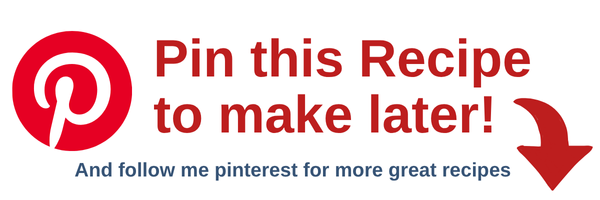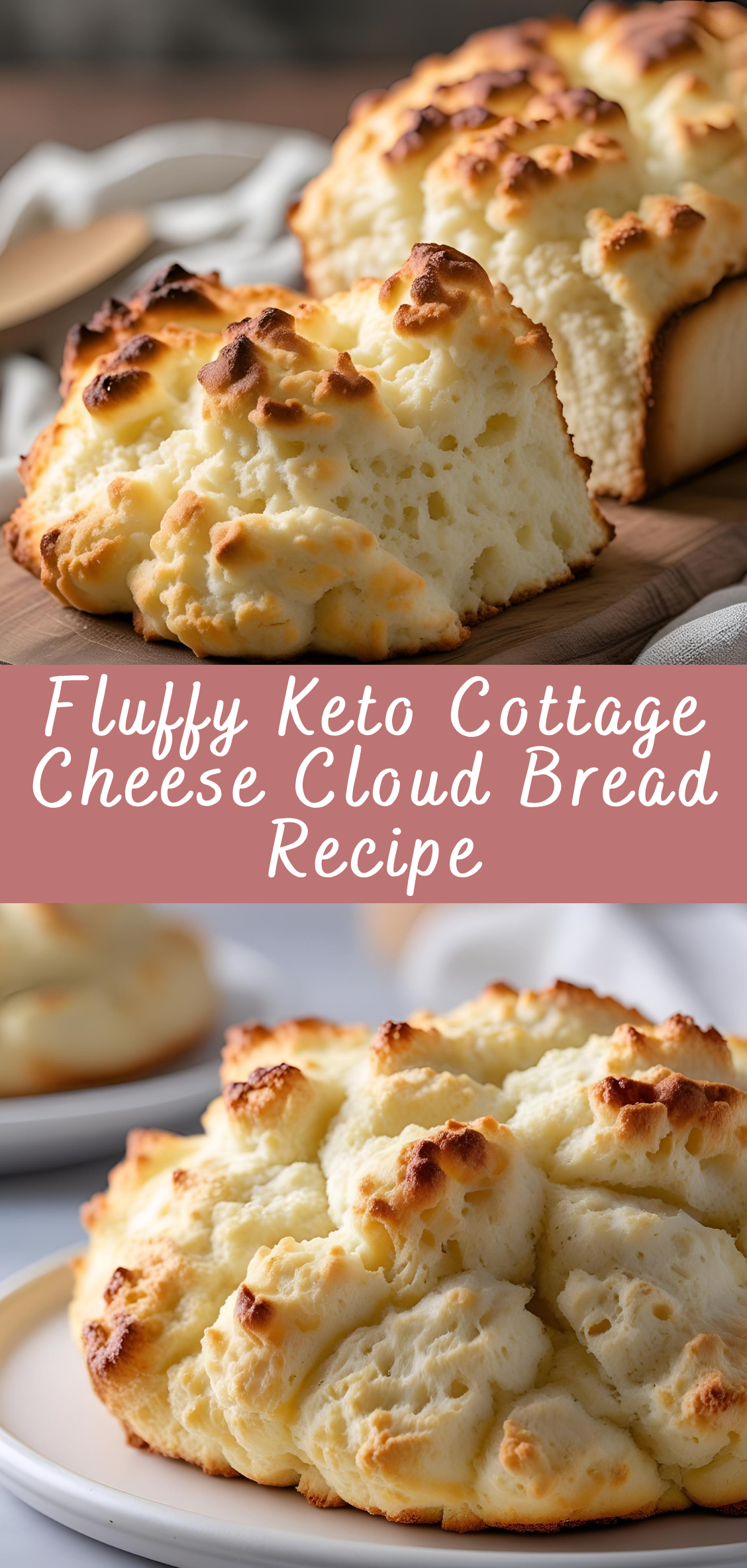Fluffy Keto Cottage Cheese Cloud Bread Recipe
In the ever-expanding world of low-carb and ketogenic cooking, cloud bread has become something of a legend. Featherlight and fluffy, it offers the structure of bread without the weight or the carbs. It’s a recipe that feels almost magical—how can something with no flour, no grains, and virtually no carbohydrates still resemble bread in texture and function?

Now enter a key variation that takes this concept even further: Cottage Cheese Cloud Bread. Infused with the creamy tang of cottage cheese and boosted with protein, this version is not only keto-friendly and gluten-free but also higher in nutrients than many of its predecessors. The addition of cottage cheese yields a more substantial crumb, a better rise, and a richness that traditional cloud bread—made only with eggs and cream cheese—often lacks.
Cottage cheese, long relegated to the back of the fridge as a “diet food,” is now enjoying a renaissance. It’s high in protein, low in carbs, and provides a uniquely mild flavor and creamy texture. In this recipe, it performs double duty: contributing both fat and protein, and helping to stabilize the structure of the cloud bread without drying it out. Where other keto breads might be too eggy or collapse after baking, this one holds its shape and flavor remarkably well.
Cloud bread was originally popularized during the Atkins diet era and resurged in the keto and gluten-free communities. In its most basic form, it contains only eggs, cream cheese, and a touch of cream of tartar or baking powder. But as the keto community grew, so did the variations. Adding ingredients like Greek yogurt, protein powder, psyllium husk, or shredded cheese allowed cooks to manipulate texture, flavor, and macronutrient balance. Cottage cheese, in particular, has become one of the most popular upgrades because of its effect on moisture and flavor.
The result is a type of “bread” that feels indulgent but contains only a few clean ingredients. It’s incredibly versatile: use it as a sandwich bun, toast it for breakfast with nut butter, or turn it into mini pizzas or sliders. It can be sweet or savory depending on your mix-ins. Best of all, it requires no fancy equipment, no rare keto flours, and no long rising times—just a bowl, a mixer, and a baking tray.
This is not just a recipe—it’s a roadmap to building your own keto bread experience, tailored to your tastes and needs. Whether you’re brand new to low-carb baking or a seasoned keto meal planner looking for a new staple, this version of cloud bread offers both simplicity and sophistication.
Let’s begin by breaking down the ingredients and understanding what makes this version so fluffy, flavorful, and foolproof.
Step-by-Step Instructions for Fluffy Keto Cottage Cheese Cloud Bread
Step 1: Gather and Prepare Ingredients
You will need:
-
3 large eggs, separated
-
½ cup (120g) full-fat cottage cheese
-
¼ teaspoon cream of tartar
-
¼ teaspoon sea salt (or to taste)
-
Optional:
-
¼ teaspoon garlic powder (for savory flavor)
-
1 teaspoon dried herbs (e.g., Italian seasoning)
-
½ tsp baking powder (for extra lift)
-
1–2 teaspoons psyllium husk or coconut flour (for added firmness)
-
Equipment:
-
Mixing bowls (preferably one metal or glass for egg whites)
-
Hand mixer or stand mixer (crucial for meringue)
-
Silicone spatula
-
Baking tray lined with parchment paper or silicone mat
-
Wire rack (for cooling)
-
Fine-mesh strainer (if needed for cottage cheese)
Step 2: Separate the Eggs
This is the foundation of cloud bread. Separate the egg whites and yolks into two large, clean bowls. Be careful not to get any yolk in the whites, or they won’t whip properly. Even a drop of fat (from yolk or oil) will ruin your meringue.
Why this matters:
Egg whites will trap air when whipped, forming a meringue. This gives cloud bread its structure and volume. If contaminated with fat or if the bowl is greasy, the whites won’t form stiff peaks.
Pro Tip:
Use cold eggs for easier separation. Then, let them sit out for 15–20 minutes—room temperature whites whip more quickly and form a more stable foam.
Step 3: Blend the Yolks with Cottage Cheese
In the bowl with the egg yolks, add:
-
½ cup full-fat cottage cheese
-
¼ tsp sea salt
-
Optional seasonings (garlic powder, herbs, etc.)
Using a fork, whisk, or immersion blender, mix until completely smooth. You want no visible curds remaining—aim for a thick, uniform paste. If your cottage cheese is particularly chunky, you may want to blend it briefly in a food processor or pass it through a fine-mesh sieve.
Why cottage cheese?
It adds moisture, fat, and protein. Unlike cream cheese, it also contributes a bit of natural tanginess and a lighter texture, helping the cloud bread puff more during baking.
Step 4: Whip the Egg Whites
To the clean bowl with egg whites, add:
-
¼ tsp cream of tartar (or ½ tsp lemon juice or vinegar if unavailable)
Using a hand or stand mixer, beat on medium-high speed until you reach stiff peaks. This means when you lift the beater, the peak stands up straight without collapsing. It should be glossy and stable.
Why cream of tartar?
It stabilizes the meringue by lowering pH, helping it hold its shape during folding and baking. Without it, your egg whites may deflate too easily.
Visual cue:
This takes about 4–6 minutes. Be patient. Don’t stop at soft peaks—fully stiff peaks are key to that fluffy, souffle-like texture.
Step 5: Fold the Meringue into the Yolk Mixture
Using a silicone spatula, gently stir ⅓ of the whipped egg whites into the yolk and cottage cheese mixture. This loosens it.
Then, gently fold in the remaining whites in two more additions. Use a figure-eight motion, and avoid overmixing. It’s okay if a few small white streaks remain.
Why folding matters:
This keeps the whipped air bubbles intact. Overmixing will deflate your batter, resulting in dense or flat bread. Gentle folding ensures the final product bakes tall and fluffy.
Texture goal:
Your batter should be light, airy, and spoonable—not runny.
Step 6: Portion and Shape the Rounds
Preheat your oven to 300°F (150°C). Line a large baking sheet with parchment paper or a silicone baking mat.
Use a spoon or measuring cup to dollop the mixture onto the tray in 8–10 even rounds, spacing them about 2 inches apart. Gently shape into circles with the back of your spoon or spatula.
Size tip:
About 3½ to 4 inches in diameter is standard for sandwich buns. For sliders, make smaller rounds. Keep in mind: they will puff up, then slightly settle after baking.
Step 7: Bake Low and Slow
Place the tray on the center rack of the oven and bake for 25–30 minutes, or until the tops are golden and slightly firm to the touch.
For extra firmness and dryness (especially if you plan to store or toast them), turn off the oven after baking and let the cloud bread sit inside with the door ajar for 10–15 more minutes.
Why a low bake?
High temperatures can cause the outside to brown too quickly while the inside stays raw or collapses. A gentle bake dries them evenly, forming a stable structure without overcooking.
Step 8: Cool Completely
Once out of the oven, transfer the rounds to a wire cooling rack. Do not stack or cover them while hot—this causes steam to form, softening the exterior.
Let them cool for at least 20 minutes before handling. They will firm up as they cool and become more “bread-like.”
Note:
Fresh from the oven, they’re fragile and airy, like a souffle. As they cool, they gain structure and are easier to slice, spread, or store.
Step 9: Store or Use Immediately
Cloud bread is best the day it’s baked but stores well in the fridge or freezer.
Storage Tips:
-
Fridge: Store in an airtight container with paper towels to absorb moisture for up to 5 days.
-
Freezer: Freeze with parchment between each round in a zip-top bag for up to 3 months.
Reheat gently in a toaster oven or air fryer for 2–3 minutes at 300°F to refresh texture.
Fluffy Keto Cottage Cheese Cloud Bread Recipe
In the ever-expanding world of low-carb and ketogenic cooking, cloud bread has become something of a legend. Featherlight and fluffy, it offers the structure of bread without the weight or the carbs. It’s a recipe that feels almost magical—how can something with no flour, no grains, and virtually no carbohydrates still resemble bread in texture and function?
Ingredients
- 3 large eggs, separated
- ½ cup full-fat cottage cheese (blended until smooth for best texture)
- ¼ tsp cream of tartar (optional, but helps stabilize egg whites)
- ¼ tsp salt
- ¼ tsp garlic powder or Italian seasoning (optional, for savory flavor)
Instructions
1. Prep:
- Preheat oven to 300°F (150°C).
- Line a baking sheet with parchment paper.
2. Whip Egg Whites:
- In a clean mixing bowl, beat egg whites and cream of tartar until stiff peaks form. Set aside.
3. Mix Yolks and Cottage Cheese:
- In another bowl, whisk together egg yolks, blended cottage cheese, salt, and optional seasonings until smooth.
4. Combine:
- Gently fold the whipped egg whites into the cottage cheese mixture in 2–3 additions. Do not overmix — keep it fluffy!
5. Shape & Bake:
- Scoop 8 even mounds onto the prepared baking sheet, about ½ inch thick.
- Bake for 25–28 minutes or until golden and set. Centers should spring back when touched.
6. Cool:
- Let cool on a wire rack for 10 minutes before serving.
Notes
- Make it sweet: Add 1 tsp vanilla and a sugar-free sweetener for a dessert version.
- Texture tip: Blending the cottage cheese ensures a smooth, uniform texture with no curds.
- Freezable: Freeze between parchment sheets and toast from frozen as needed.



